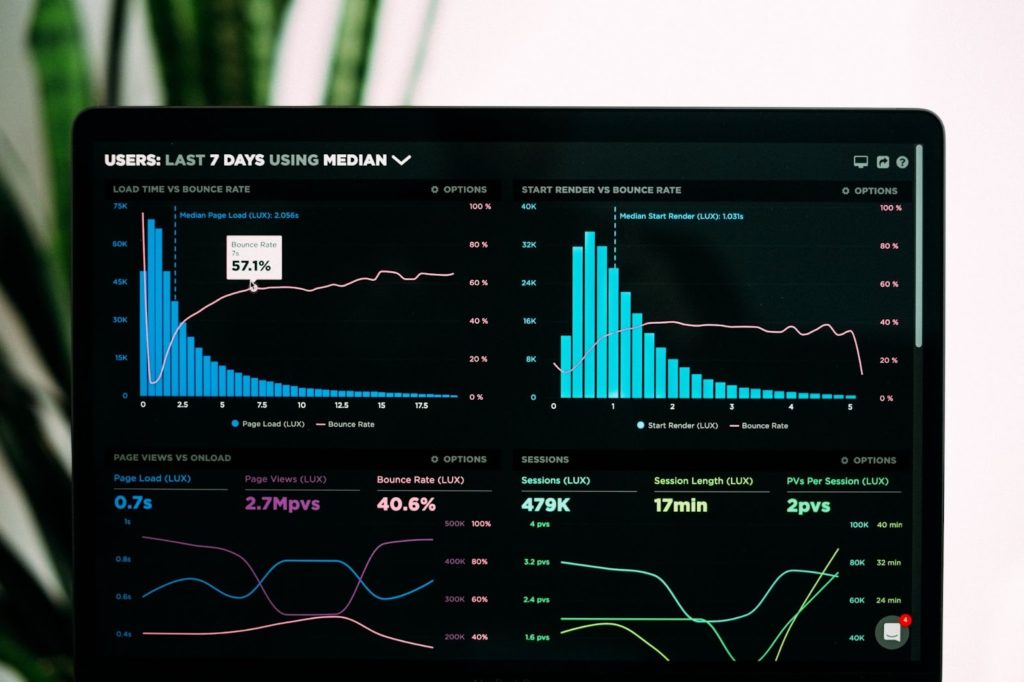
Source: Luke Chesser
It took your team countless hours to build and perfect your application. But now that the difficult part is done, you need to keep an eye on your product to ensure it’s running as intended. To do that, you’ll need to undertake some application performance monitoring (APM). APM tools provide your team with data that can help them find, isolate, and fix problems that adversely affect your application’s performance.
In this article, I’ll cover what application performance monitoring is, what it does, its benefits, and some top features to look for in APM tools. So without delay, let’s define application performance monitoring and what it’s all about.
What Is Application Performance Monitoring?
Application performance monitoring involves observing applications and collecting data on key performance metrics to ensure your app runs optimally. It also involves analyzing the data to assess the impact on business and your customers. APM also enables you to adapt the application to address similar problems before they impact the end-user experience.
In essence, it’s all about proactively fixing things before they impact your users’ experience. As you know, any outage or downtime costs money and damages your reputation. These tools will also ensure that your website or application works optimally.
Now that we know what APM is, let’s discuss how it works.
How Does APM Work?
An APM isn’t just one tool. Rather, it’s a collection of tools that work together to ensure your applications perform well. This happens through monitoring data flows, user interactions, runtime application architecture, customer transactions, general analytics, and reporting.
In addition, APM fits in very well with DevOps practices. This basically means the DevOps team would do most of the monitoring. They would also work with your development team to fix issues before they affect the end users’ experience.
With that said and done, let’s get into some specifics on what APMs can show you.
What Components Does APM Track?
Data reigns supreme, and that’s why you want an APM in the first place. Since APM tools tend to be a collection of individual tools, I’ll go over the top 5 components you should ensure your APM tools track.

Source: Marten Bjork UnSplash
1. Real User Monitoring (RUM)
RUM is a tech that dev and ops teams use to gain real-world insight and observability into application performance and availability. Here, RUM tech captures users’ interactions on the website or application.
These metrics help with testing for new features and finding hidden anomalies and errors. It can also find page load times, latency from various regions or CDNs, browser compatibility and performance, etc. With this real-world information, you’ll be able to plug and fix real issues your users are experiencing.
2. Runtime Application Architecture Discovery, Modeling, and Display
Your APM checks the hardware and other software your application uses. It also checks the paths used to communicate across its runtime and how it works. For example, it’ll detect bad paths or missing files needed to run an application.
IT teams can then anticipate potential problems for the future based on things like pattern recognition. Pattern recognition determines whether things are running as expected or whether any unexpected behavior has arisen. This will allow you to quickly find issues at the foundation of your application, which, if not corrected, could cause a major crash.
3. Business Transactions
Tracking business transactions are also known as user-defined transaction profiling. It examines specific user interactions and then recreates them for testing under the conditions and environment that initially led to the problem.
This helps dev teams to re-create an issue a user may face. It then helps them work through the problem to find a fix. In return, it’ll take less time to debug an error a user has found. This profiling and component monitoring are essential to troubleshoot today’s complex applications.
4. Component Monitoring
Component monitoring is sometimes also called an application component deep dive. In other words, in-depth monitoring applies to all resources connected to said application. This can be anything touching that application, like OSs, servers, middleware, network components, application components, etc.
These analytics are also important for predicting and resolving potential future issues. They also help identify, locate, and resolve performance issues by comparing historical baseline data and finding areas for potential improvement.
Finally, all this data will need interpretation and analysis to form a clear meaning.
5. Analytics and Reporting
The final, but perhaps, most important part of APM is gathering and analyzing all the data. Much of this data consists of metrics, traces, and log files. You can then create human-readable reports that developers can internalize and act on.
With all the things an APM does, you probably understand why an APM is so important. But let’s do a quick summary anyway.
Why APM Tools Are Important
As technology changes and evolves, software becomes more complex and more distributed across the globe than ever before. In addition, application architecture has changed greatly over time. To ensure your applications perform optimally in this complex and ever-changing environment, monitoring your applications’ performance is crucial.
Some of the benefits your company will gain from application performance monitoring tools are:
- Customer experience: You’ll be able to fix things before they break. This will also give your company a better name.
- Cost savings: You’ll save money from costly outages by fixing up your UX and preventing downtime.
Now that you have a good understanding of APM, let’s dive into the top 3 features you should look for in any tool.
Top 3 App Performance Monitoring Features
An APM tool is surely beneficial — but it might not be as beneficial if you don’t choose it right. So here are 3 things you need to look for in an app performance monitoring tool.
1. Web Performance Monitoring
Unfortunately, your greatest asset, people, can also be your biggest risk when it comes to computing systems. Phishing and cybercriminals will do anything to get you to click on that link to allow them access. As part of performance monitoring, you can set policies about what your users can and can’t download. This will help you ensure your users aren’t able to access dangerous links or downloads.
2. Application Availability and Uptime
As application hosting has transitioned to the cloud, you can use your applications worldwide. That said, you’ll want to ensure your app is available where it should be and is up and running in all regions and tenancies. Keeping track of outages and looking for the indicators of an impending outage will help your team to stave off the outage and save money over the long term.
3. Detailed Traces of Individual Web Requests or Transactions
Troubleshooting problems in production are very difficult. Traces make this a lot easier by seeing details about exactly what is happening. Traces contain data like web request info, user info, dependencies, logging statements, application errors, and key methods. Seeing all of this data in a single trace can short-circuit having to attempt to reproduce a problem in QA.
4. Application Log Data
Log data is the main source of information for developers after deploying the application. Developers need access to logs via a centralized logging solution like a log management product. They need this information to better investigate outages, troubleshoot bugs, or identify security risks. Most APM solutions don’t support centralizing logs for developers. Ensure you get an APM that supports this feature so your developers can optimize and streamline your application.
As we draw to a close, I want to take the time to leave you with a few thoughts before you go out and add an APM to your company’s toolbox.
Final Words
Application performance monitoring is a really great tool to use to ensure your applications — which you have spent a lot of time and resources to develop — work at their optimum performance. Sure, you’ll need to factor in the costs of the APM tools and the rates of the people who will operate them. That said, in the long run, the ROI will pay for these things themselves. In today’s IT world, it’s all about using application and system data to make things better for your applications and, more importantly, your customers.
Got some more questions about APM or want to read some more related articles? Check out the FAQ and Resources sections below.
FAQ
What are the differences between APM and network observability?
Application performance monitoring focuses on KPIs and finding the root of application performance issues. On the other hand, observability looks more at the overall picture of system health, not application health. Systems include networks, which is primarily what observability is used for.
What is data visualization?
Data visualization tools allow you to see your application’s health in real-time. That way, if something’s going on, your teams will see it right away and take action. It’s beneficial to have one data visualization tool in your enterprise’s toolbox.
What is network management?
Network management involves managing network traffic and data across distributed networks such as on-prem, cloud, and hybrid models. Depending on your company’s size and business, you might have an entire team dedicated to looking after every network management facet.
Can network management change network traffic?
Yes, absolutely. As you monitor your systems and networks, you’ll want to change the flow of your traffic to better optimize your systems. Once optimized, you won’t need as much hardware or associated resources to maintain your network. You’ll save on hardware pulse and drive more customers to your apps and sites.
What can be monitored with APM?
You can monitor cloud systems to ensure that they comply with SLAs. Cloud performance monitoring looks at the tracking and behavior of applications based on private or hybrid cloud deployments.
Resources
TechGenix: Article Network Observability and Network Monitoring
Find out the similarities and differences between network observability and network monitoring.
TechGenix: Guide on Network Traffic Monitoring Tools
Learn more about all the various network traffic monitoring tools.
TechGenix: Article on Network Performance Monitoring
Explore the network performance monitoring options for your business.
TechGenix: Guide on Security Monitoring
Learn how to monitor the security of your company.
TechGenix: Article on Network Observability
Discover how network observability is an integral piece of your overall network health.



